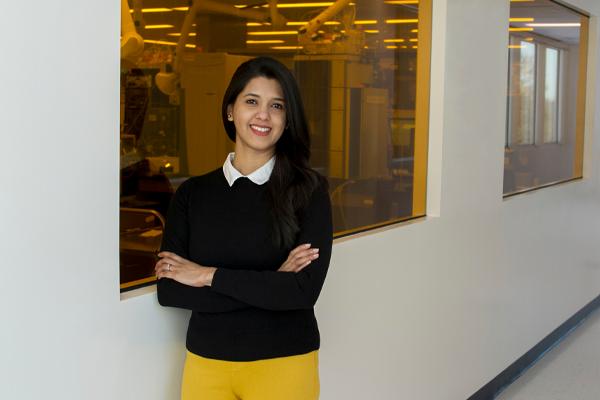
It was scents that first attracted Souvagya Biswas to chemistry. “When I was a kid, it always fascinated me that vanillin and methyl salicylate had such unique smells,” he says. His passion for chemistry was ignited when, in high school, he learned their odours were due to the molecules contained within them.
A bachelor’s degree in chemistry, at Jadavpur University, was followed by a masters in chemistry at the Indian Institute of Technology, Bombay. It was there that Biswas fell for asymmetric catalysis, during a short course taught by T. V. RajanBabu, a visiting lecturer from Ohio State University.
After graduating with his masters, Biswas joined RajanBabu’s research group for a PhD in asymmetric carbon–carbon bond formation. He then joined Dean Toste’s group at the University of California, Berkeley, for a postdoc in asymmetric catalysts for carbon–heteroatom bond formation.
During his postdoc, Biswas got a glimpse of scientific life outside of academia through a collaboration with Dow’s Core R&D synthesis and catalysis group. “I started interacting with a Dow scientist and was amazed to see some of the fundamental challenges that still exist in industry and to learn how solving them would have such a relevance in our daily life,” he explains.
In January 2018, Biswas joined the same Dow team He designs rhodium catalysts for the conversion of propylene feedstock into butanal. “Butanal, and other oxygenated solvents, are basic precursors for surface coatings, resins, dyes, paints, and plasticizers,” Biswas says. “I am developing more efficient and robust catalysts for the hydroformylation reactions to meet the global demand for these chemicals.”
Biswas is also the industrial lead in a Dow collaboration with Craig Hawker and Chris Bates at the University of Santa Barbara to study the phase behavior of silicone-organic hybrid materials.
In his spare time, Biswas volunteers with the Midland section of the American Chemical Society as a means to advocate for industrial chemistry careers. “Providing graduate students with a perspective from industry can help them shape their career and find a way to pursue their passion,” he explains.
What is in your lab coat pocket?
A Sharpie, a pen, a pencil, pipette bulbs, cut-resistant gloves, and a new pair of nitrile disposable gloves.
What tool can't you live without in the lab?
Nuclear magnetic resonance spectroscopy. I use NMR multiple times a day when I’m in the lab.
What is the best part of your job?
Talking with subject matter experts inside the company. People who have spent 30 years of their career solving a single problem have so much knowledge, and learning from them is the best part about being in industry.
Name a project you are particularly proud of
Last year, we developed a new catalyst for the hydroformylation reaction. We had many challenges, and it was really rewarding when we eventually provided a synthetic route to the catalyst. We are now working on the scale-up process.
What is your favorite catalyst and why?
I have so many of them! Catalysts close to my heart include the Wilkinson catalyst, the Ziegler–Natta catalyst, and the cobalt-based catalysts used for hydrovinylations.
If you could develop a catalyst that sped up any reaction at all, what would it be?
A catalyst for the chemical recycling of plastics. Sustainability is something that is central to everything Dow is doing right now.
Who is your scientific hero?
Henri Kagan, the father of asymmetric catalysis, and R. B. Woodward. Their innovation and unique approaches to organic chemistry were really impressive, especially when you consider how little technology they had compared to chemists today.
If you weren't a chemist, what job would you like to do?
A historian. When reading chemistry journals, I always look for details about the history of the field or mentions of serendipitous discoveries.
What is your morning routine?
I wake up between 5:30 and 6:00, have a cup of coffee, take shower and then try to hit lab by 7:00 to 7:30. I like to get a couple of hours in the lab before the meetings begin.
This article has been edited for length and clarity. The opinions expressed in this article are the author's own and do not necessarily reflect the view of their employer or the American Chemical Society.
Copyright 2021 American Chemical Society (All Rights Reserved)










